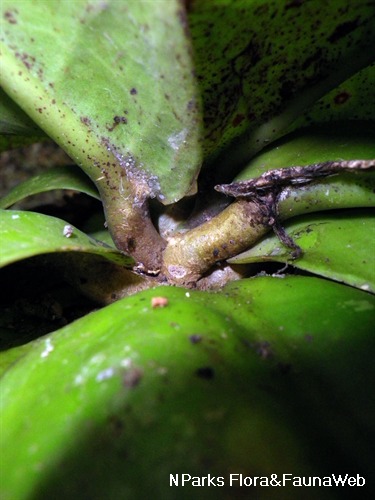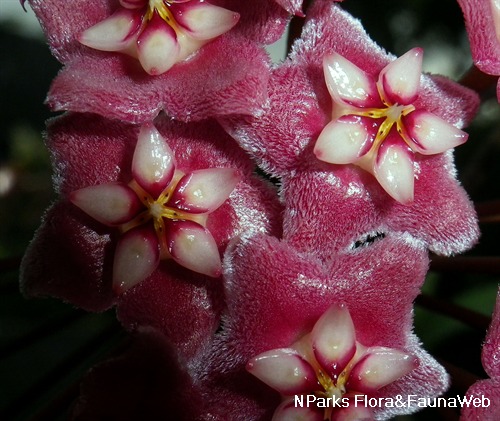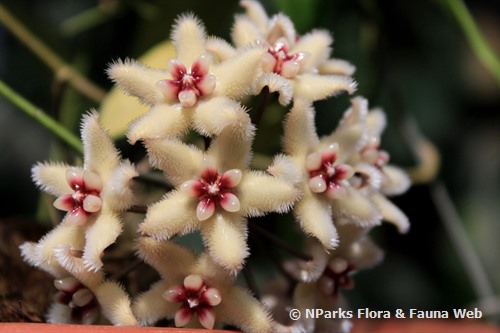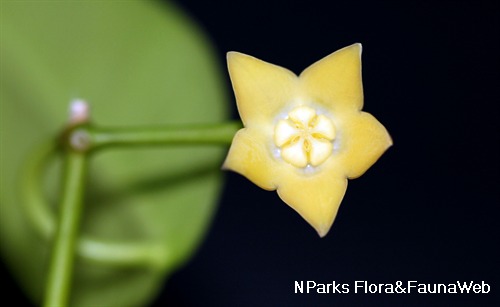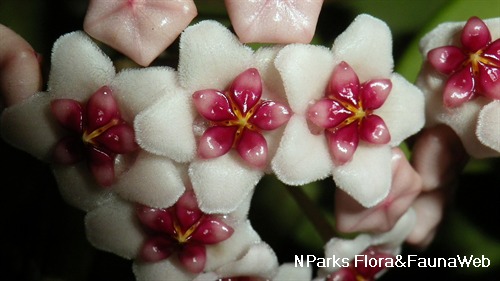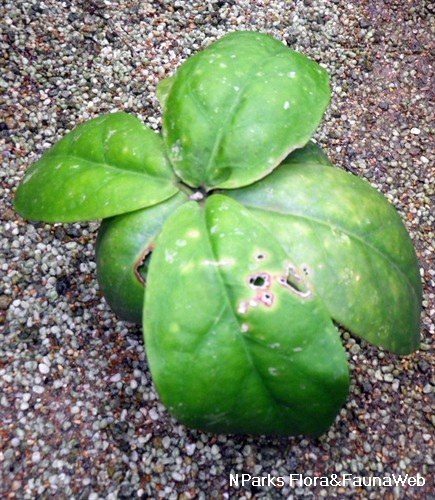
Name
Classifications and Characteristics
| Plant Growth Form | Climber |
|---|
Biogeography
| Native Distribution | Thailand, Malaysia and Borneo |
|---|---|
| Native Habitat | Terrestrial (Primary Rainforest) |
| Preferred Climate Zone | Tropical |
Description and Ethnobotany
| Growth Form | Slender, twining myrmecophytic (ant inhabited) climber with dimorphic leaves. |
|---|---|
| Foliage | Leaves are of two types (Dimorphic)- Domatia forming leaves (those that form a tight cluster to harbor ants; referred to as 'Type I' leaves) broad obovate, fleshy, leathery, to 32cm in length, forming a tight cluster around the stem due to the shortening of internodes. 'Type II' leaves (foliage leaves that are not involved in the harbouring of ants) lanceolate, to 12cm in length, in pairs along the stem. It has been observed that 'Type I' tends to be much longer if the domatia is inhabited by ants, as compared to when they are devoid of ants. |
| Flowers | Flowers to 1cm across, petals cream. corona cream- milky white with rose-red markings towards the center of the corona; corona lobes held upright, resembling teeth with pointed cusps. |
| Associated Fauna | In studies conducted in Thailand and Borneo, a number of ant species were found to be nesting within the leaf domatia of this Hoya species, which is formed by overlapping layers of the 'Type I' leaves of the plant. Some of the Crematogaster, Camponatus and Polyrachis spp. collected from the leaf domatia were observed to be using the plant mainly for shelter, whereas ants such as Pheidole sp. tended scale insects within the leaf clusters, and also used the plant as a brood/nest site. The plant benefits from this association as the debris and waste material (from the ants) collected within the leaf domatia forms a ready source of nutrients for the plant. |
| Etymology | The specific epithet mitrata comes from the mitre-shaped flowers, they can also mean turban in Latin. |
Landscaping Features
| Desirable Plant Features | Ornamental Flowers, Ornamental Form |
|---|---|
| Landscape Uses | Small Gardens, Container Planting, Suitable for Hanging Baskets |
| Thematic Landscaping | Bird & Wildlife Garden |
| Usage Hazard - Cons | Toxic Upon Ingestion |
| Usage Hazard - Cons Remarks | Avoid contact with milky/ white sap as it may cause skin irritation in certain individuals. Keep plants away from children and pets as sap could be toxic. |
Fauna, Pollination and Dispersal
| Pollination Method(s) | Biotic (Fauna) |
|---|
Plant Care and Propagation
| Light Preference | Semi-Shade |
|---|---|
| Water Preference | Moderate Water, Occasional Misting |
| Rootzone Tolerance | Well-Drained Soils, Easy to Grow |
| Planting Remarks | This is a species that attracts and harbors ants within the leaves. It may not be suitable for individuals who will prefer not to have ants in their garden/ house. |
| Pest(s) | Sucking Insects |
| Propagation Method | Seed, Stem Cutting |
Foliar
| Foliage Retention | Evergreen |
|---|---|
| Mature Foliage Colour(s) | Green |
| Mature Foliage Texture(s) | Leathery |
Floral (Angiosperm)
| Flower Colour(s) | Cream / Off-White, Red, White |
|---|---|
| Flower Texture(s) | Waxy |
| Flower Grouping | Cluster / Inflorescence |
Image Repository
Others
| Master ID | 31463 |
|---|---|
| Species ID | 5860 |
| Flora Disclaimer | The information in this website has been compiled from reliable sources, such as reference works on medicinal plants. It is not a substitute for medical advice or treatment and NParks does not purport to provide any medical advice. Readers should always consult his/her physician before using or consuming a plant for medicinal purposes. |

